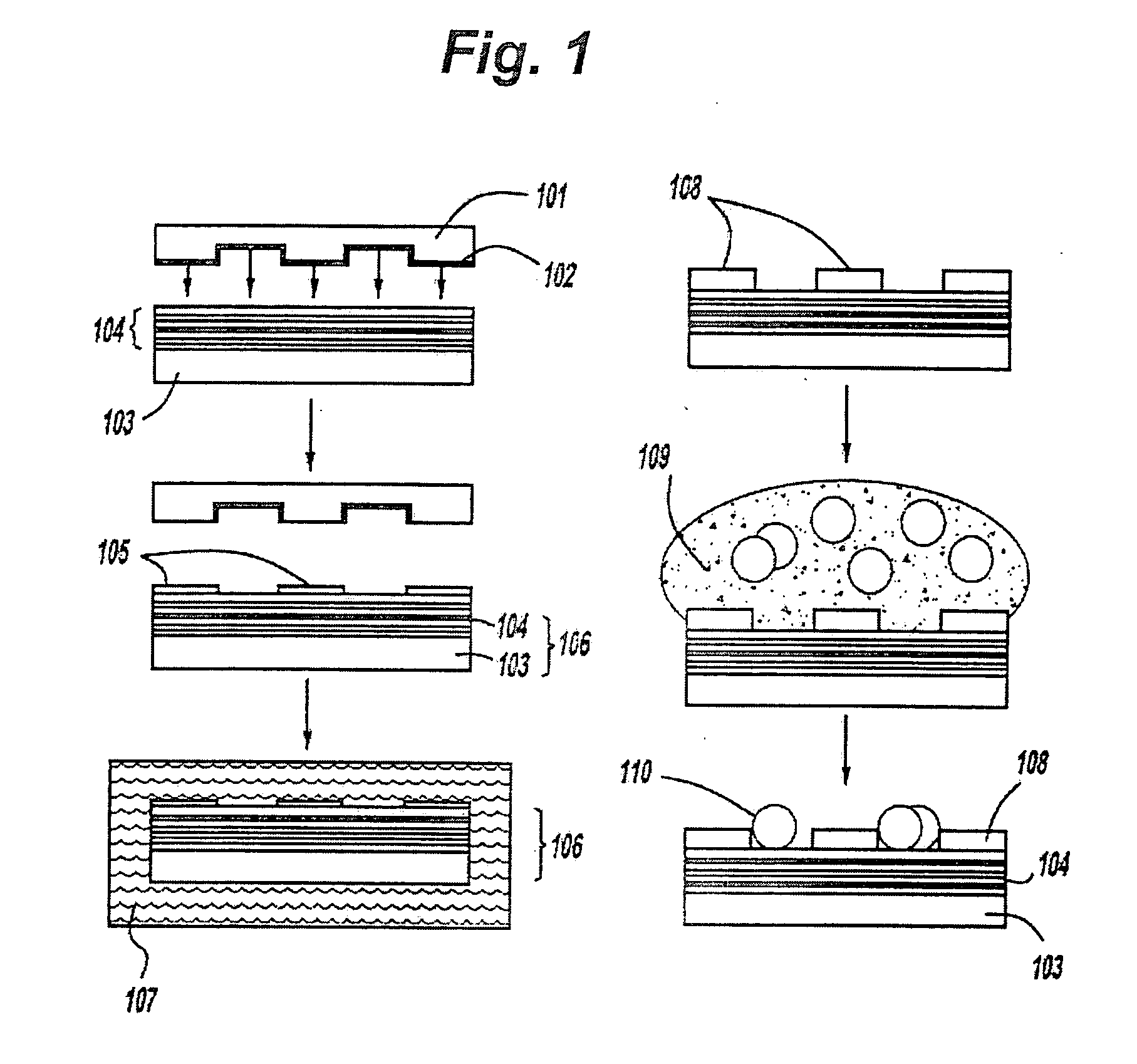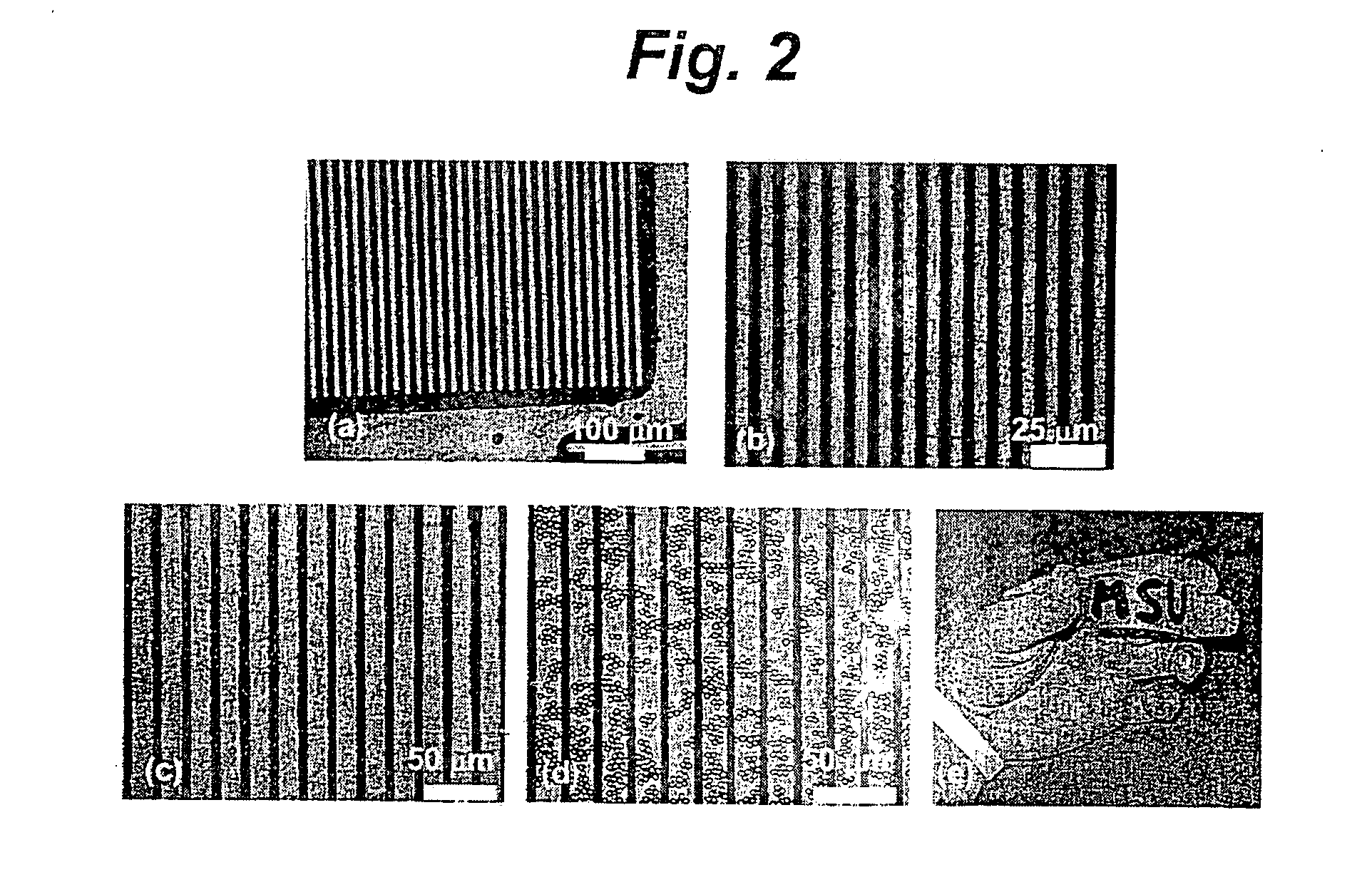Selective metal patterns using polyelect rolyte multilayer coatings
a multi-layer coating and selective metal technology, applied in the direction of coatings, printed circuit manufacturing, liquid/solution decomposition chemical coatings, etc., can solve the problems of limiting the functionality of substrates and other materials, expensive device fabrication steps, and inability to function properly, so as to achieve stable coating, reduce fabrication costs, and increase economic
- Summary
- Abstract
- Description
- Claims
- Application Information
AI Technical Summary
Benefits of technology
Problems solved by technology
Method used
Image
Examples
Embodiment Construction
Experimental Details
Substrate Preparation—Coating of Substrates with PEM
[0041] To demonstrate the versatile and selective metal patterning process on virtually any surface type, hydrophilic glass and hydrophobic polystyrene substrates were selected. Glass microscope slides (Corning Glass Works, Corning, N.Y.) were sonicated with a Branson ultrasonic cleaner (Branson Ultrasonics Corporation, Danbury, Conn.) for 20 minutes in an Alconox (Alconox Inc., New York, N.Y.) solution followed by 10 minutes of sonication in water. The slides were then blown dry with nitrogen and plasma cleaned (Harrick Scientific Corporation, Broadway Ossining, N.Y.) with oxygen at ˜13.3 Pa for 10 minutes. Before use, polystyrene microscope slides (Nalge Nunc International, Rochester N.Y.) and flexible polyester transparency films (3M, St. Paul, Minn.) were plasma treated under the same conditions for 10 minutes. A Carl Zeiss slide stainer equipped with a custom-designed ultra sonication bath (Advanced Son...
PUM
| Property | Measurement | Unit |
|---|---|---|
| inter-feature distances | aaaaa | aaaaa |
| thickness | aaaaa | aaaaa |
| contact time | aaaaa | aaaaa |
Abstract
Description
Claims
Application Information
 Login to View More
Login to View More - R&D
- Intellectual Property
- Life Sciences
- Materials
- Tech Scout
- Unparalleled Data Quality
- Higher Quality Content
- 60% Fewer Hallucinations
Browse by: Latest US Patents, China's latest patents, Technical Efficacy Thesaurus, Application Domain, Technology Topic, Popular Technical Reports.
© 2025 PatSnap. All rights reserved.Legal|Privacy policy|Modern Slavery Act Transparency Statement|Sitemap|About US| Contact US: help@patsnap.com



